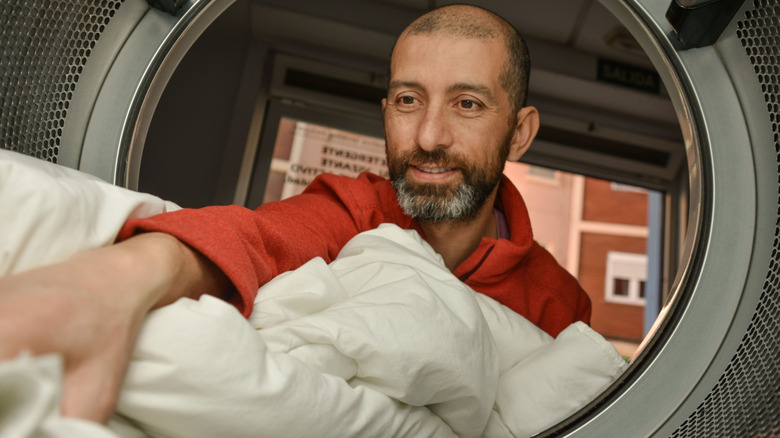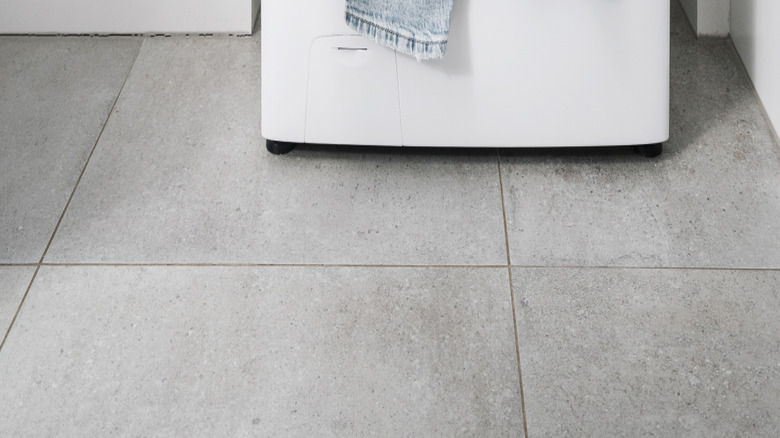The Reason Washing Machines Are Smaller Than Dryers Actually Makes Sense
Maybe you have a theory. But it's more likely that you haven't bothered to think about it ... or haven't even noticed. After all, the awareness that washing machines tend to be smaller than dryers isn't exactly secret knowledge. But it turns out to be something we should be discussing just a little bit more.
If you hadn't noticed, don't be embarrassed. It's not like those people who thought Mickey Mouse was a dog or that unicorns were real. This is just a simple fact with a simple explanation: You need room for air to circulate in order for clothes to dry (and clothes tend to take up more space as they dry). It is air, after all, into which your clothes' wetness evaporates and is whisked away. The discrepancy is most clearly seen in all-in-one washer/dryer combos, which typically have different stated capacities for washing and drying.
It turns out there are all sorts of downsides to overloading your dryer. If you fill up a dryer, it will increase drying times and, therefore, the cost of doing your laundry ... though you should also think twice before drying a smaller load to save time. A chronically overloaded dryer wears out faster, as do the clothes it dries. And, in fact, an overloaded dryer almost certainly means that you overloaded the washer as well, which can lead to a washer with a burned-out motor, a damaged drum, and prematurely worn parts ... to say nothing of clothes that aren't as clean as they should be. So it makes sense to just make dryers a little bigger. Or does it?
How much smaller should washers be?
Some experts say that a dryer should have about twice the capacity (in volume) of its companion washer, but most estimate that the dryer should be about 50% bigger. If we make the reasonable assumption that matched washer/dryer pairs have intentionally balanced capacities at the right size ratio, we should be able to look at those machines and figure out what the manufacturers believe to be the ideal. We looked at pairs sold together at a major retailer, and found that a dryer's capacity averages 158% of the matching washer's. So, for example, a 4.7 cubic foot washer would be paired with a dryer that holds about 7.4 cubic feet.
Washer and dryer capacities are sometimes discussed in terms of dry weight, usually in pounds or kilograms, but it's not the most useful way to think about it because the clothes won't be dry most of the time, and their weight will change radically in the washer and gradually in the dryer. Perhaps more importantly, you shouldn't think in terms of capacity, but in terms of ideal load size. That's because it's not good to fill the washer up, either, and you'll start to see signs that your washing machine is overloaded if you do. Many pros note that a dryer is most efficient when it's about half-full, and a half-filled drum is generally considered a regular load of laundry for a washing machine. This allows the washer more room to clean better and the tumble dryer more room to move air around, so ultimately the ideal size difference might turn out even larger than the difference in drum sizes.

